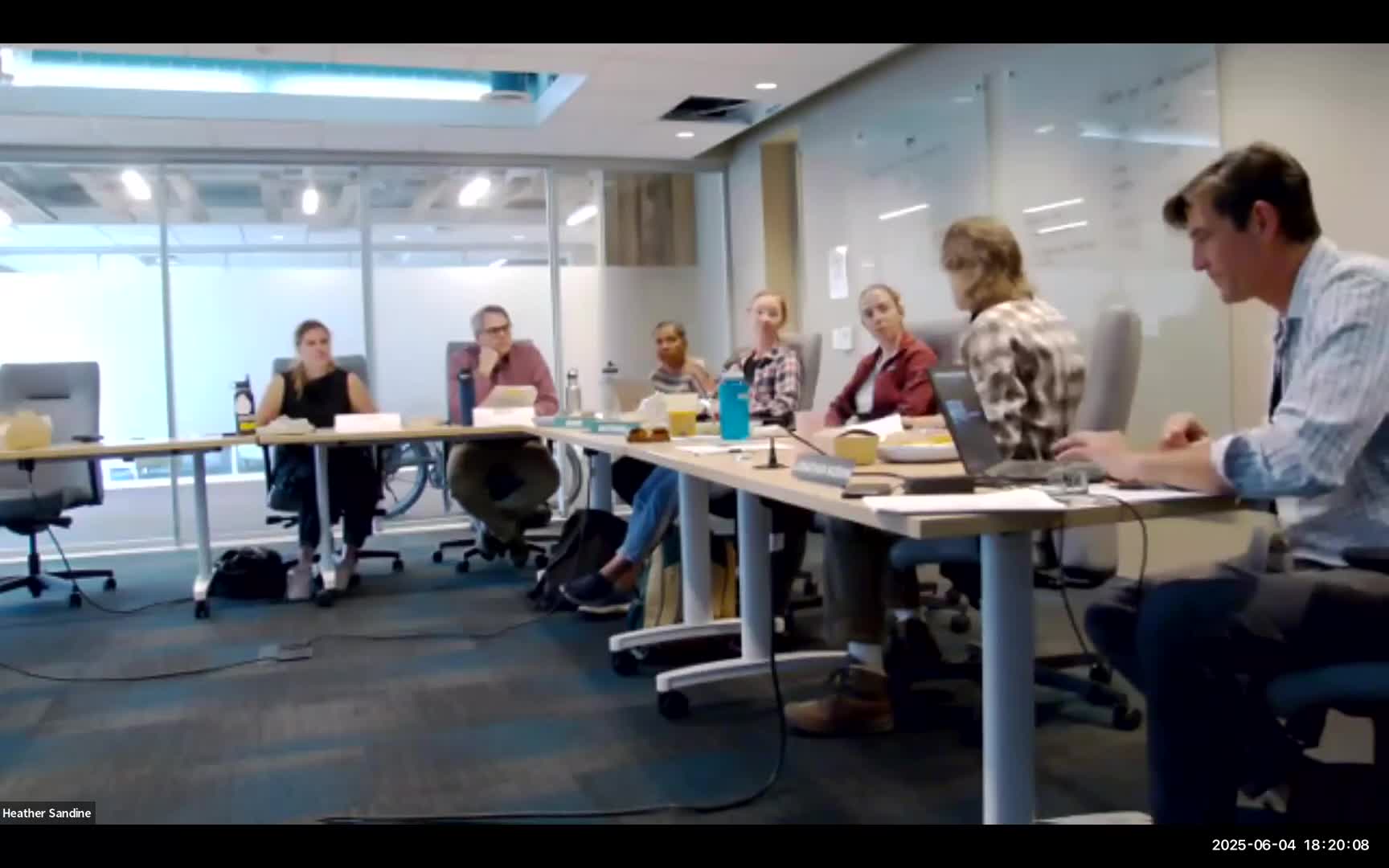Nature Based Solutions team proposes new fire resiliency guidelines for urban landscapes
June 07, 2025 | Boulder, Boulder County, Colorado
This article was created by AI summarizing key points discussed. AI makes mistakes, so for full details and context, please refer to the video of the full meeting. Please report any errors so we can fix them. Report an error »

The Boulder City Environmental Advisory Board convened on June 7, 2025, to discuss critical updates regarding urban landscape management and fire resilience strategies. The meeting featured a presentation from the senior division manager of the nature-based solutions team, who outlined a working draft aimed at aligning various departments on guidelines for managing fire-resilient urban landscapes.
The manager emphasized that these guidelines are grounded in the best available science and experience, acknowledging the evolving nature of fire management in urban settings. The discussion highlighted the significant threat posed by ember cast during wildfires, which has reshaped traditional understandings of the wildland-urban interface (WUI). This new perspective is particularly relevant in light of recent wildfire events, such as the Marshall Fire, which underscored the need for updated strategies.
Key developments in the proposed guidelines include the identification of three broad areas within the WUI that will be subject to specific codes for new developments and redevelopments. These areas have been delineated based on modeling that assesses how far embers can travel during high wind events. The manager noted that this approach allows for a more nuanced understanding of fire risk, moving beyond previous assumptions about the WUI boundaries.
The meeting also addressed questions from board members regarding the frequency of updates to the guidelines and the rationale behind the designated areas. It was clarified that the boundaries were determined through detailed modeling of ember dispersion and wind patterns, rather than arbitrary lines.
In conclusion, the meeting underscored the importance of adapting urban landscape management practices to enhance fire resilience. The guidelines will serve as a living document, evolving as new insights and experiences are gained in the field. The board plans to continue discussions on these guidelines and their implementation in future meetings.
The manager emphasized that these guidelines are grounded in the best available science and experience, acknowledging the evolving nature of fire management in urban settings. The discussion highlighted the significant threat posed by ember cast during wildfires, which has reshaped traditional understandings of the wildland-urban interface (WUI). This new perspective is particularly relevant in light of recent wildfire events, such as the Marshall Fire, which underscored the need for updated strategies.
Key developments in the proposed guidelines include the identification of three broad areas within the WUI that will be subject to specific codes for new developments and redevelopments. These areas have been delineated based on modeling that assesses how far embers can travel during high wind events. The manager noted that this approach allows for a more nuanced understanding of fire risk, moving beyond previous assumptions about the WUI boundaries.
The meeting also addressed questions from board members regarding the frequency of updates to the guidelines and the rationale behind the designated areas. It was clarified that the boundaries were determined through detailed modeling of ember dispersion and wind patterns, rather than arbitrary lines.
In conclusion, the meeting underscored the importance of adapting urban landscape management practices to enhance fire resilience. The guidelines will serve as a living document, evolving as new insights and experiences are gained in the field. The board plans to continue discussions on these guidelines and their implementation in future meetings.
View full meeting
This article is based on a recent meeting—watch the full video and explore the complete transcript for deeper insights into the discussion.
View full meeting
